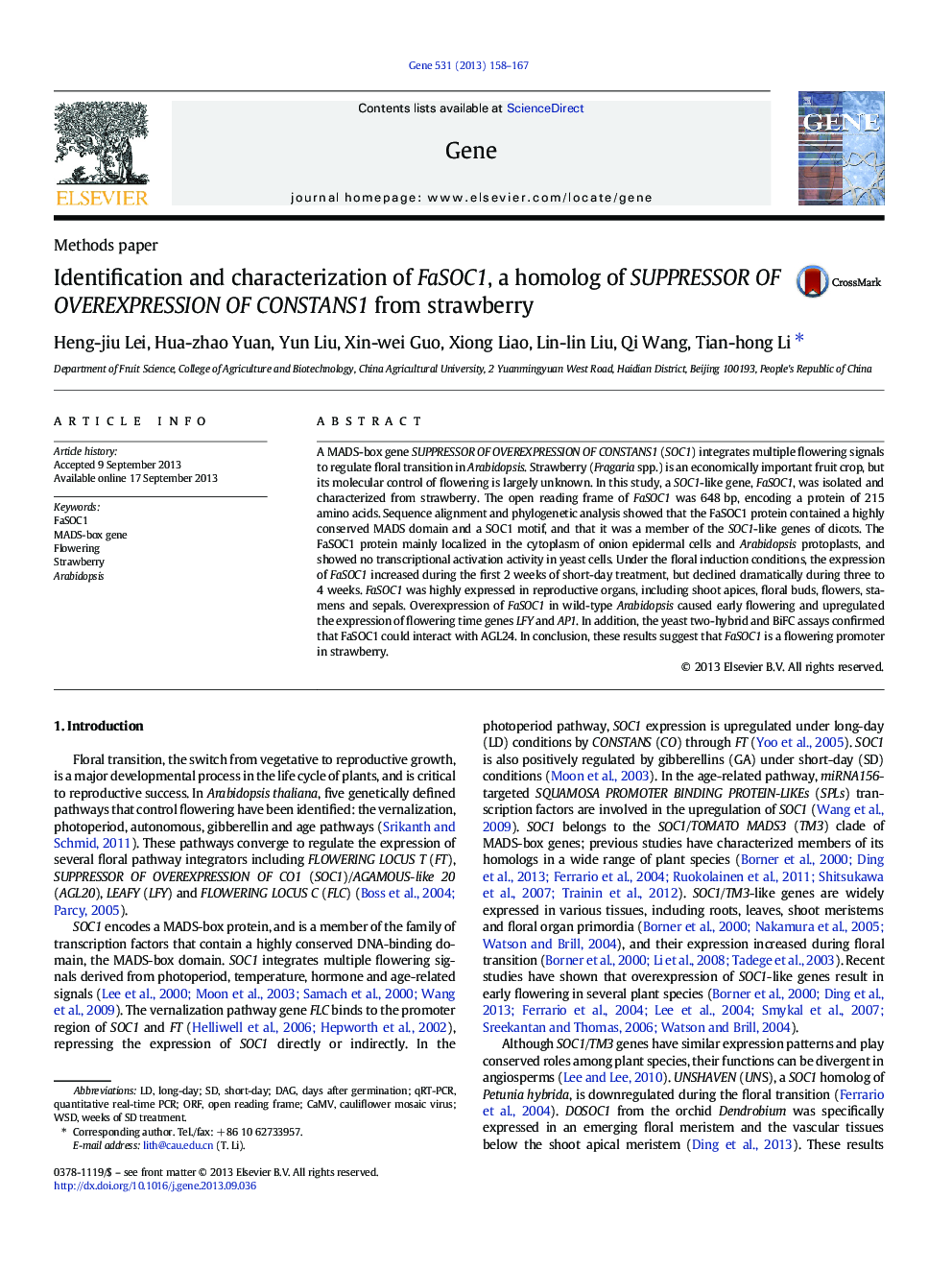| Article ID | Journal | Published Year | Pages | File Type |
|---|---|---|---|---|
| 2816838 | Gene | 2013 | 10 Pages |
•FaSOC1 contained a highly conserved MADS domain and a SOC1 motif.•FaSOC1 localized in the cytoplasm and showed no transcriptional activation activity.•FaSOC1 expression increased under the floral induction conditions.•Overexpression of FaSOC1 in Arabidopsis caused early flowering.•FaSOC1 interacted with AGL24 in yeast and planta.
A MADS-box gene SUPPRESSOR OF OVEREXPRESSION OF CONSTANS1 (SOC1) integrates multiple flowering signals to regulate floral transition in Arabidopsis. Strawberry (Fragaria spp.) is an economically important fruit crop, but its molecular control of flowering is largely unknown. In this study, a SOC1-like gene, FaSOC1, was isolated and characterized from strawberry. The open reading frame of FaSOC1 was 648 bp, encoding a protein of 215 amino acids. Sequence alignment and phylogenetic analysis showed that the FaSOC1 protein contained a highly conserved MADS domain and a SOC1 motif, and that it was a member of the SOC1-like genes of dicots. The FaSOC1 protein mainly localized in the cytoplasm of onion epidermal cells and Arabidopsis protoplasts, and showed no transcriptional activation activity in yeast cells. Under the floral induction conditions, the expression of FaSOC1 increased during the first 2 weeks of short-day treatment, but declined dramatically during three to 4 weeks. FaSOC1 was highly expressed in reproductive organs, including shoot apices, floral buds, flowers, stamens and sepals. Overexpression of FaSOC1 in wild-type Arabidopsis caused early flowering and upregulated the expression of flowering time genes LFY and AP1. In addition, the yeast two-hybrid and BiFC assays confirmed that FaSOC1 could interact with AGL24. In conclusion, these results suggest that FaSOC1 is a flowering promoter in strawberry.
